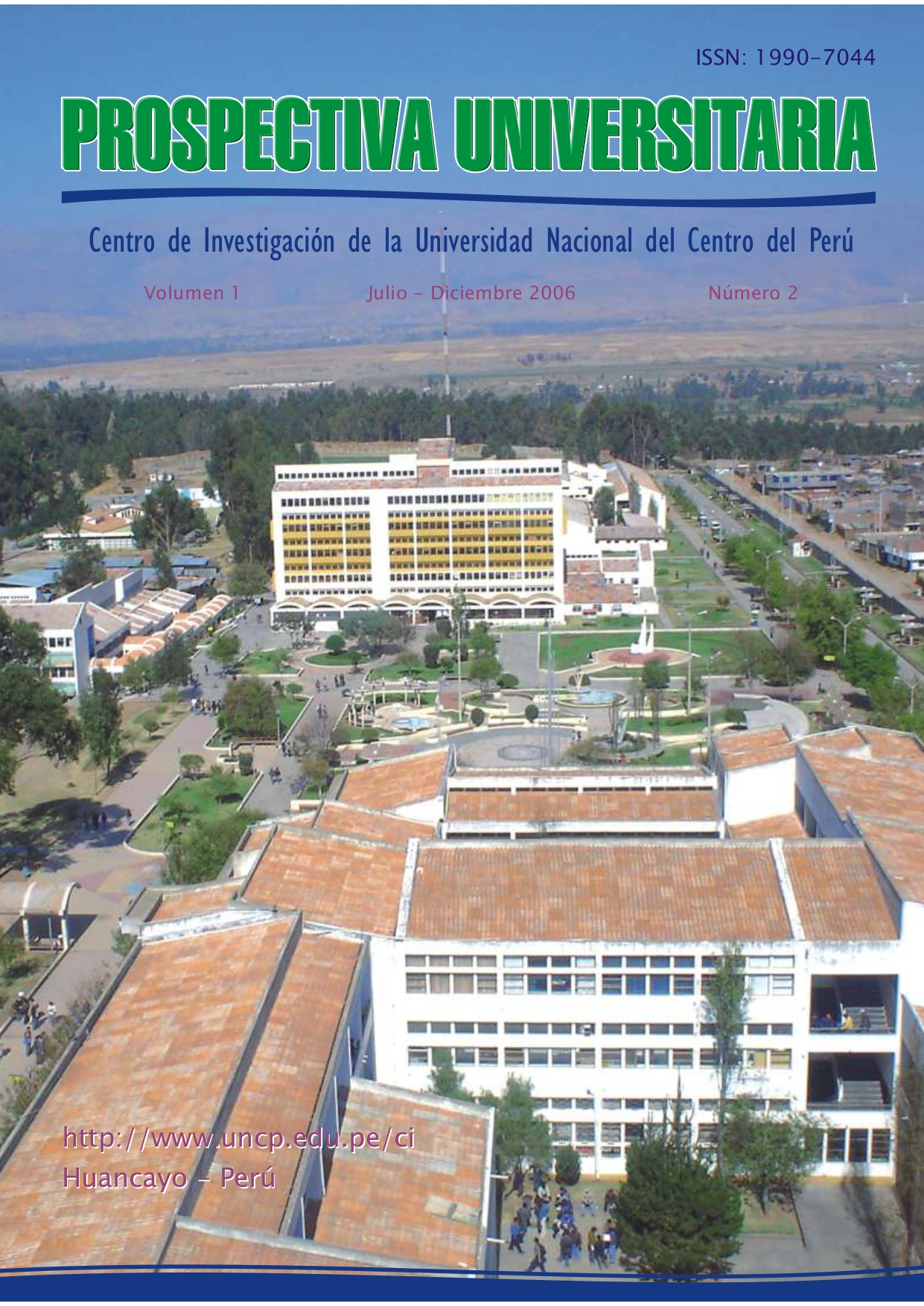NATURAL REGENERATION Of Myroxylum balsamun (L) HARMS (ESTORAQUE) IN INTERVENED FORESTS, SATIPO
DOI:
https://doi.org/10.26490/uncp.prospectivauniversitaria.2006.3.1288Keywords:
Natural regeneration, Myroxylum balsamun, brinzal, latizalAbstract
The investigation work one carries out by means of sampling in two types of forests of forest production, high and low hill, located in the Native Communities of Gloriabamba and Chamiriari, in the province of Satipo; Region Junín - Peru. For three years, in the high forest, the extraction of the species, Myroxylum balsamun (L) Harms, wellknown as "Estoraque" or "Quina quina", it has been increased in selective and uncontrolled form. Before this problem it was indispensable the necessity to know the capacity of natural regeneration to contribute with the forest reinstatement, to avoid the extinction of the species and lamentable effects as Aniba roseadera happened to the species that I arrive it is necessary to disappear the reproductive material and for ende in extinction danger. The objectives were, to evaluate the capacity of natural regeneration after the dissemination of seeds until the category latizal like base of treatments forestry, to compare the parameters dasometric and to determine the quantity of regeneration for categories; you arrives to the following results: for the type of forest high hill located on 700 msnm, null of it is of the natural regeneration. For the forests of low hill, located among 400 at 700 msnm, the natural regeneration is of 183 plants/ha for the sector of Chamiriari and of 400 plants/ha for the sector of Gloriabamba of the category brinzal; 100 plants/ha of the category latizal for both areas.
Downloads
References
Toledo E. Mercado y desarrollo de la industria forestal con especies de maderas no tradicionales. CIID: Biblioteca: Documentos: Biodiversidad Desarrollo de la Amazonía en una Economía de Mercado. Perú; 2005.
Lamprecht H. Silvicutura en los trópicos. Traducción por Dr. Antonio Carrillo. Republica Federal de Alemania. Eschborn; 1990.
Gómez A, Vásquez C, Del Amo S, Butanda A. Investigaciones sobre la regeneración de selvas altas en Veracruz”. Compañía Editorial Continental S.A. México; 1976.
Powell M. Panorama general de los árboles fijadores de nitrógeno - Myroxylon: Bálsamo. Asociación de árboles fijadores de nitrógeno (NFTA). 2004. Hallado en Google:
http//www.winrock.org/forestry/factnet.htm
Caballero R. “Plan Operativo Anual Comunidad Nativa de Chamiriari”. Satipo Perú; 2002.
Bockor I. Análisis de la composición árborea y estructura de un bosque nublado andino. Tesis
de Doctorado Universidad de Gottinga Alemania; 1979.
Abadie P C. Caracterización del tipo de bosque de terraza en la zona de Genaro Herrera - Iquitos. Tesis. Lima Perú; 1976.
FAO. Información y análisis del manejo forestal sostenible, integrando esfuerzos nacionales e internacionales en 13 países tropicales de América Latina”. Proyecto GCP/RLA/133/ EC. Chile; 2004; (Fecha de acceso enero 2006). http//www.fao.org/documents/show_cdr.asp
Angulo R. W. “Estoraque”, Myroxylon balsamun. Estación Experimental Agraria Pucallpa. Consultado 13 de setiembre 2006.
Downloads
Published
Issue
Section
License
Copyright (c) 2021 Prospectiva Universitaria

This work is licensed under a Creative Commons Attribution-NonCommercial-ShareAlike 4.0 International License.
Esta Revista es de acceso abierto a su contenido a través del Internet, poniendo a disposición de la comunidad científica los resultados de la investigación, de manera gratuita, para el intercambio del conocimiento desarrollado.
El contenidos de la Revista se distribuyen bajo la licencia Creative Commons Reconocimiento-NoComercial-CompartirIgual 4.0 Internacional.
![IconJournalPU [ENG] by Edgar Julian-Laime®](https://revistas.uncp.edu.pe/public/journals/1/pageHeaderLogoImage_en.png)









